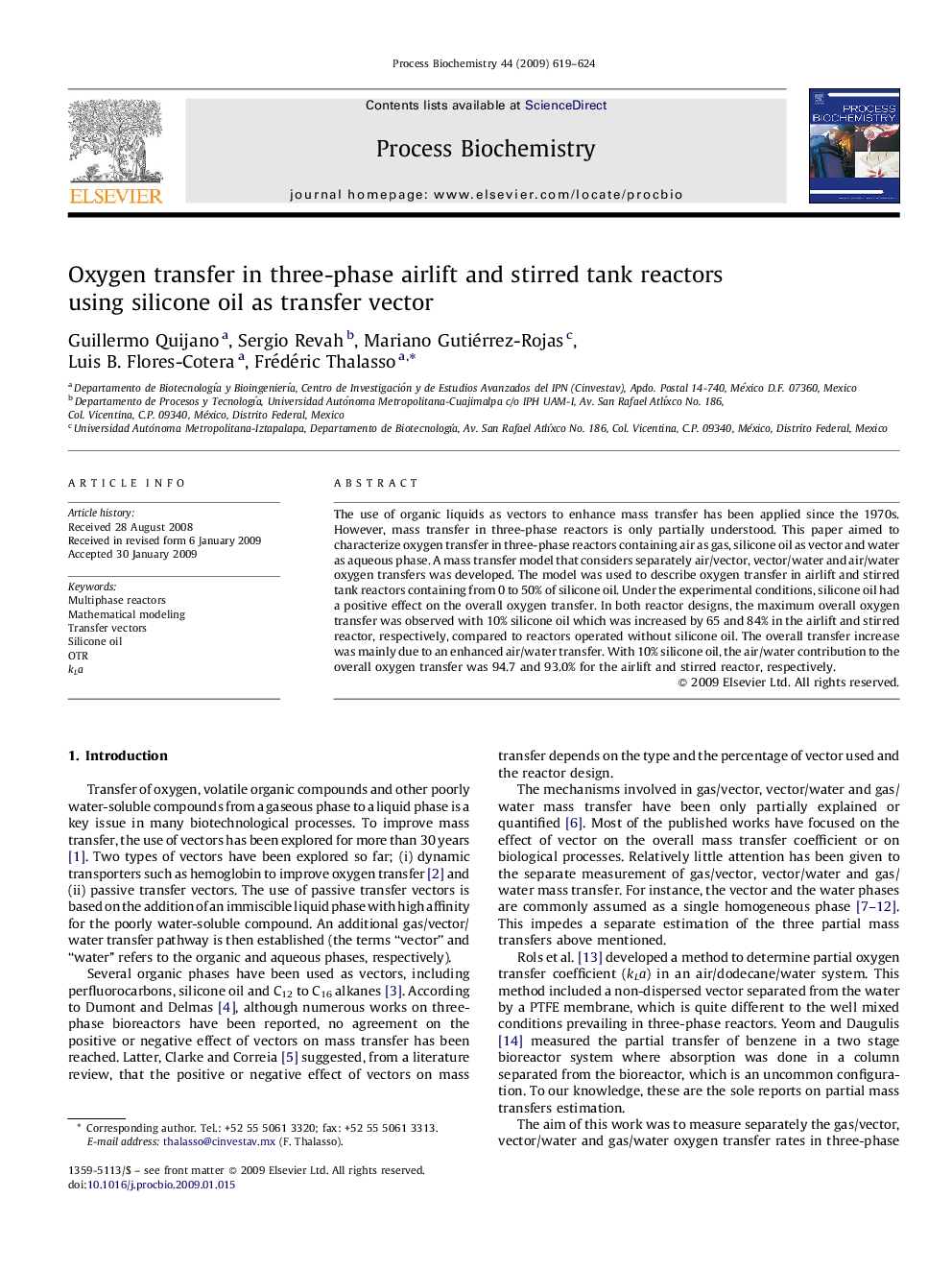| Article ID | Journal | Published Year | Pages | File Type |
|---|---|---|---|---|
| 35162 | Process Biochemistry | 2009 | 6 Pages |
The use of organic liquids as vectors to enhance mass transfer has been applied since the 1970s. However, mass transfer in three-phase reactors is only partially understood. This paper aimed to characterize oxygen transfer in three-phase reactors containing air as gas, silicone oil as vector and water as aqueous phase. A mass transfer model that considers separately air/vector, vector/water and air/water oxygen transfers was developed. The model was used to describe oxygen transfer in airlift and stirred tank reactors containing from 0 to 50% of silicone oil. Under the experimental conditions, silicone oil had a positive effect on the overall oxygen transfer. In both reactor designs, the maximum overall oxygen transfer was observed with 10% silicone oil which was increased by 65 and 84% in the airlift and stirred reactor, respectively, compared to reactors operated without silicone oil. The overall transfer increase was mainly due to an enhanced air/water transfer. With 10% silicone oil, the air/water contribution to the overall oxygen transfer was 94.7 and 93.0% for the airlift and stirred reactor, respectively.
